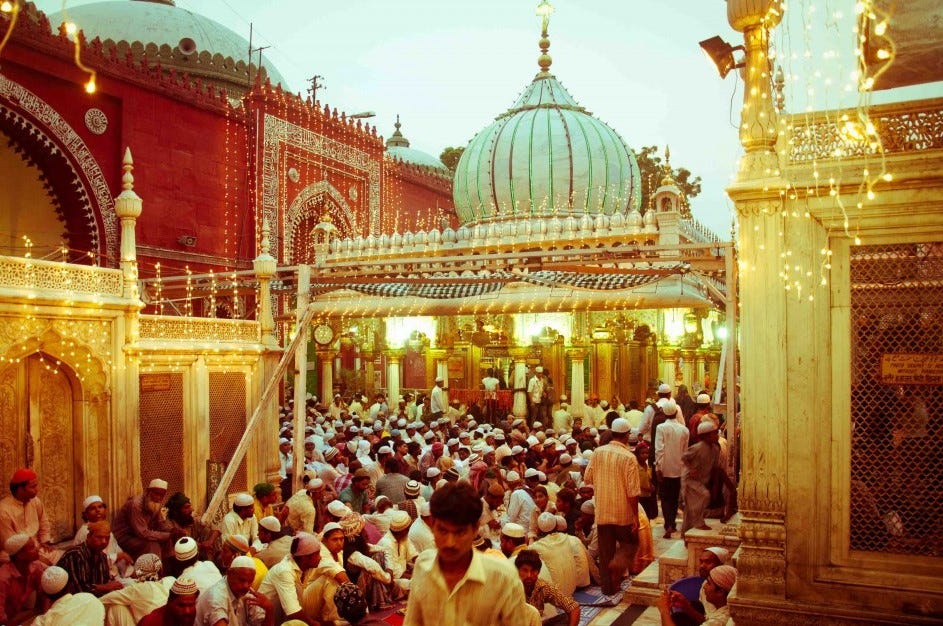Welcome to the Brown History Newsletter. If you’re enjoying this labour of love, please do consider becoming a paid subscriber. Your contribution would help pay the writers and illustrators and support this weekly publication. If you like to submit a writing piece, please send me a pitch by email at brownhistory1947@gmail.com. Check out our Shop and our Podcast. You can also follow us on Instagram and Twitter.
Dargahs: Sites of the Divine and Magical in South Asia by Azania Imtiaz Khatri-Patel
The narrow streets in Delhi leading to Nizammudin Dargah, the mausoleum of Sufi saint Nizamuddin Aulia, are lined with hawkers and beggars. The saccharine smell of rose water mixes with the fatty smoke rising from pans deep frying goat meat and chickpea-battered chicken. The city’s heat competes with the heat from large vessels holding khichda- a heavy lentil and mutton concoction, that you can buy plates of for the poor. ‘Do a good deed!’ the man, spooning plates of mush, yells at passersby.
The crowds jostle. It is a trek to make it to the holy site. Shoes are tied with purple-pink ribbons and held safely for the low price of ten rupees. The Dargah is one of the hundreds of Sufi shrines that dot the South Asian landscape and attract scores of visitors. For many South Asian Muslims living abroad, visiting a dargah or the mausoleum of a peer (holy man) is a crucial part of their visit home. While the validity of dargahs remains a debated question in Islamic scholarship, the prevalence of these shrines and their mythologies are inseparable from the South Asian imagination, both religious and secular.





